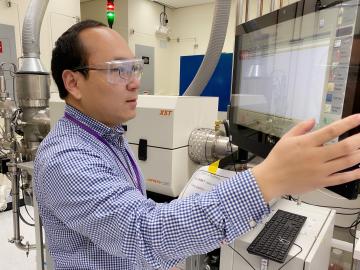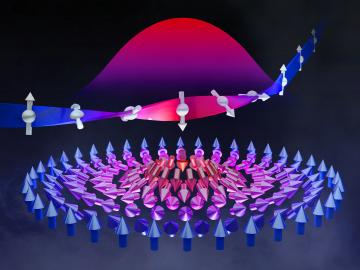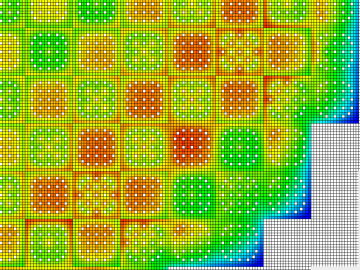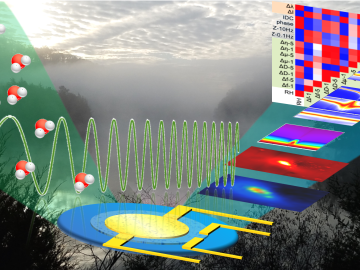
Filter News
Area of Research
- (-) Materials (111)
- (-) Nuclear Science and Technology (25)
- (-) Quantum information Science (1)
- Advanced Manufacturing (22)
- Biology and Environment (20)
- Building Technologies (1)
- Computer Science (3)
- Electricity and Smart Grid (3)
- Energy Science (181)
- Functional Materials for Energy (1)
- Fusion and Fission (31)
- Fusion Energy (17)
- Isotope Development and Production (1)
- Isotopes (2)
- Materials Characterization (1)
- Materials for Computing (19)
- Materials Under Extremes (1)
- National Security (14)
- Neutron Science (34)
- Nuclear Systems Modeling, Simulation and Validation (1)
- Sensors and Controls (1)
- Supercomputing (33)
- Transportation Systems (2)
News Topics
- (-) 3-D Printing/Advanced Manufacturing (26)
- (-) Advanced Reactors (14)
- (-) Fusion (15)
- (-) Grid (6)
- (-) Materials Science (79)
- (-) Molten Salt (7)
- (-) Transportation (14)
- Artificial Intelligence (9)
- Big Data (2)
- Bioenergy (13)
- Biology (4)
- Biomedical (8)
- Buildings (5)
- Chemical Sciences (32)
- Clean Water (3)
- Composites (9)
- Computer Science (25)
- Coronavirus (5)
- Critical Materials (13)
- Cybersecurity (7)
- Energy Storage (34)
- Environment (16)
- Exascale Computing (2)
- Frontier (3)
- High-Performance Computing (4)
- Irradiation (1)
- Isotopes (16)
- ITER (1)
- Machine Learning (5)
- Materials (73)
- Mathematics (1)
- Microscopy (29)
- Nanotechnology (40)
- National Security (3)
- Neutron Science (38)
- Nuclear Energy (49)
- Partnerships (11)
- Physics (31)
- Polymers (17)
- Quantum Computing (3)
- Quantum Science (20)
- Security (2)
- Simulation (1)
- Space Exploration (7)
- Summit (2)
Media Contacts

Scientists at Oak Ridge National Laboratory used new techniques to create a composite that increases the electrical current capacity of copper wires, providing a new material that can be scaled for use in ultra-efficient, power-dense electric vehicle traction motors.

About 60 years ago, scientists discovered that a certain rare earth metal-hydrogen mixture, yttrium, could be the ideal moderator to go inside small, gas-cooled nuclear reactors.

A developing method to gauge the occurrence of a nuclear reactor anomaly has the potential to save millions of dollars.

Oak Ridge National Laboratory scientists have discovered a cost-effective way to significantly improve the mechanical performance of common polymer nanocomposite materials.

Scientists discovered a strategy for layering dissimilar crystals with atomic precision to control the size of resulting magnetic quasi-particles called skyrmions.

The inside of future nuclear fusion energy reactors will be among the harshest environments ever produced on Earth. What’s strong enough to protect the inside of a fusion reactor from plasma-produced heat fluxes akin to space shuttles reentering Earth’s atmosphere?

A team led by Oak Ridge National Laboratory developed a novel, integrated approach to track energy-transporting ions within an ultra-thin material, which could unlock its energy storage potential leading toward faster charging, longer-lasting devices.

It’s a new type of nuclear reactor core. And the materials that will make it up are novel — products of Oak Ridge National Laboratory’s advanced materials and manufacturing technologies.

As CASL ends and transitions to VERA Users Group, ORNL looks at the history of the program and its impact on the nuclear industry.

An all-in-one experimental platform developed at Oak Ridge National Laboratory’s Center for Nanophase Materials Sciences accelerates research on promising materials for future technologies.


